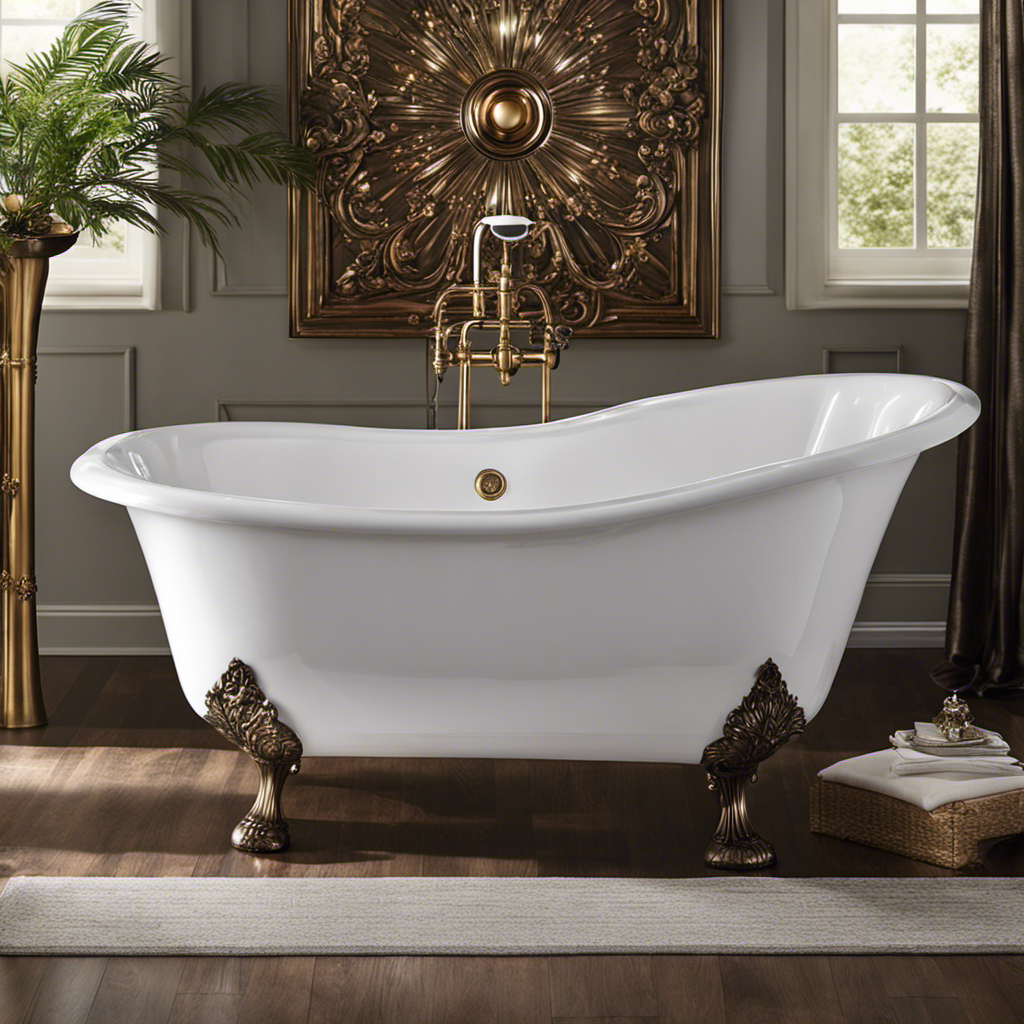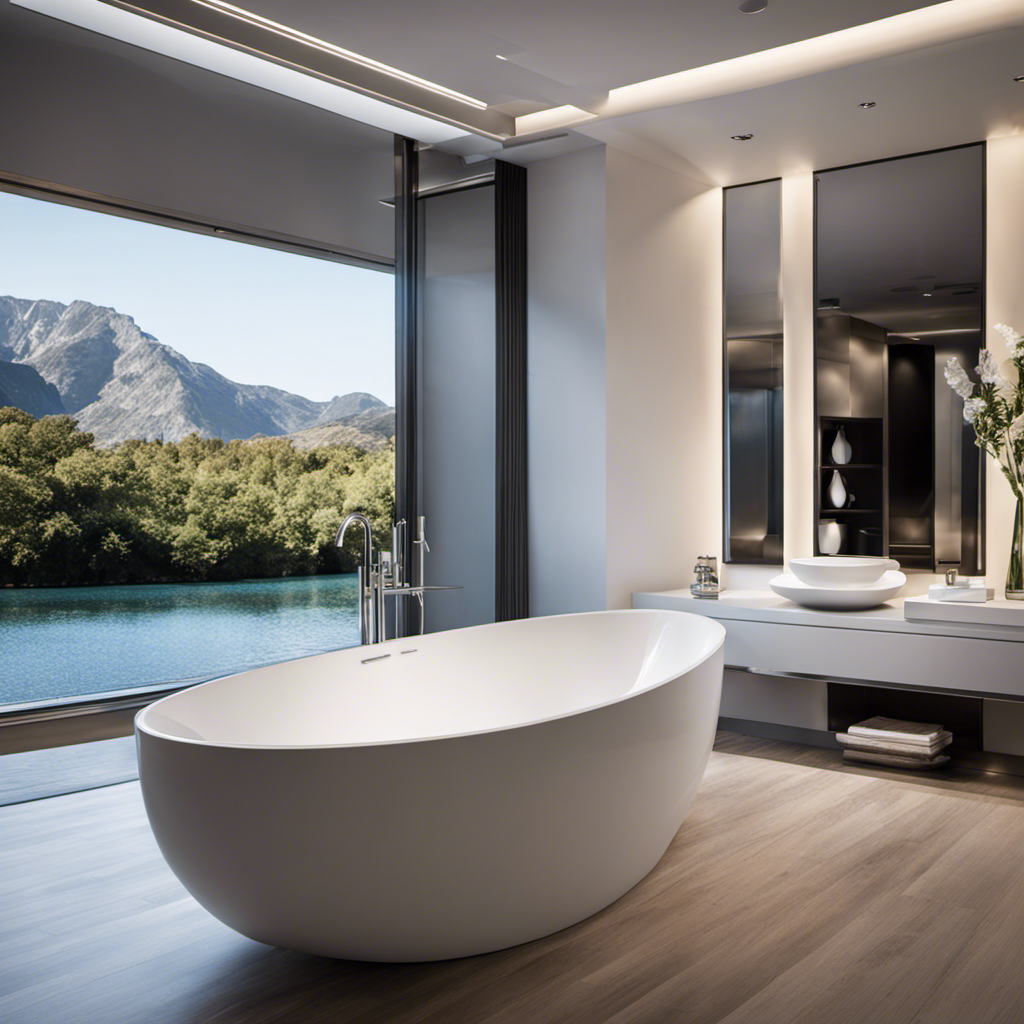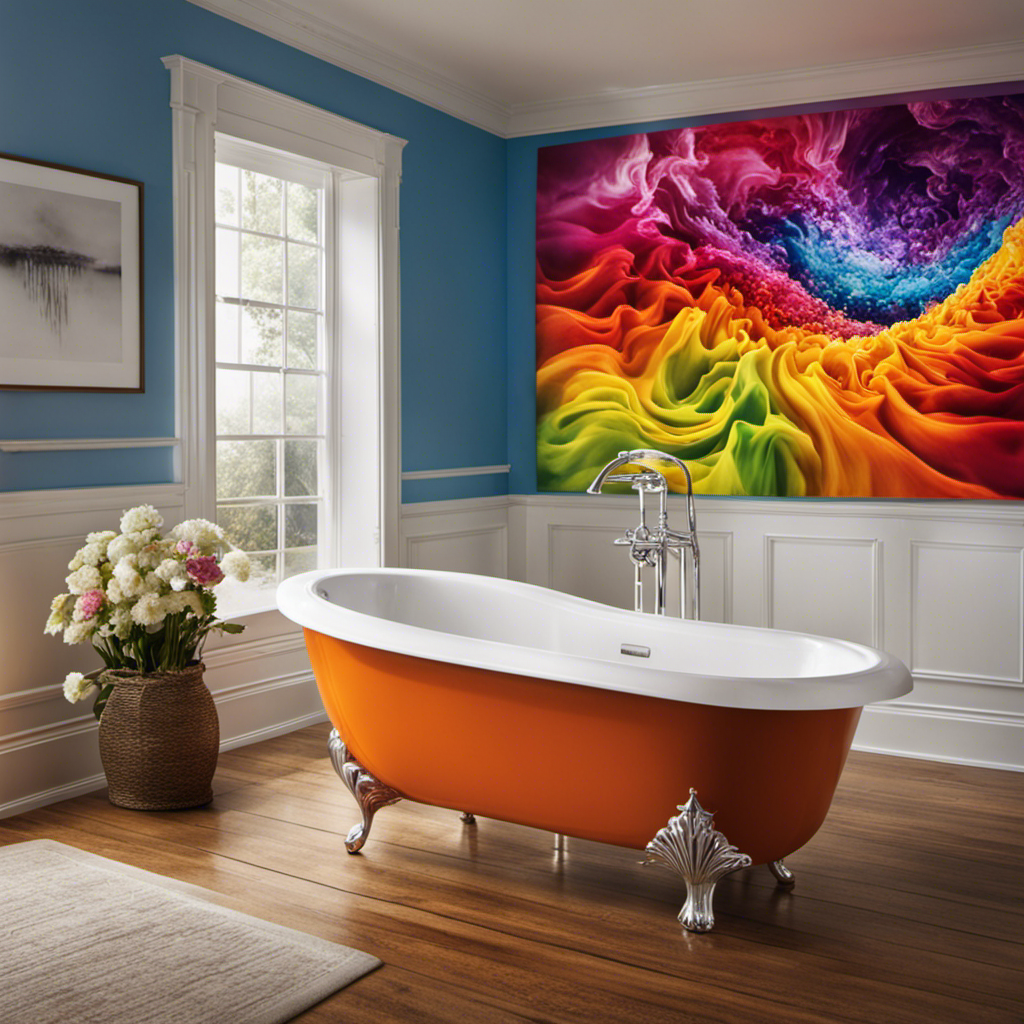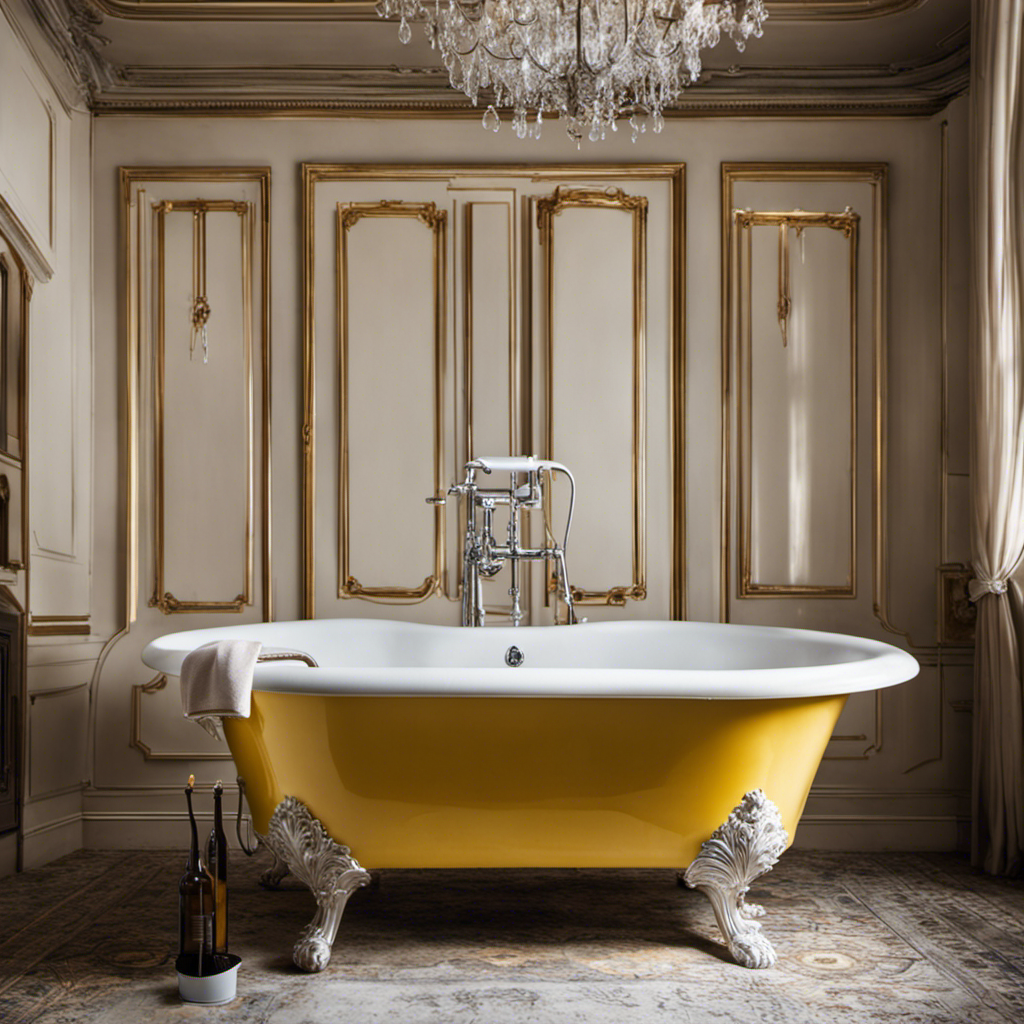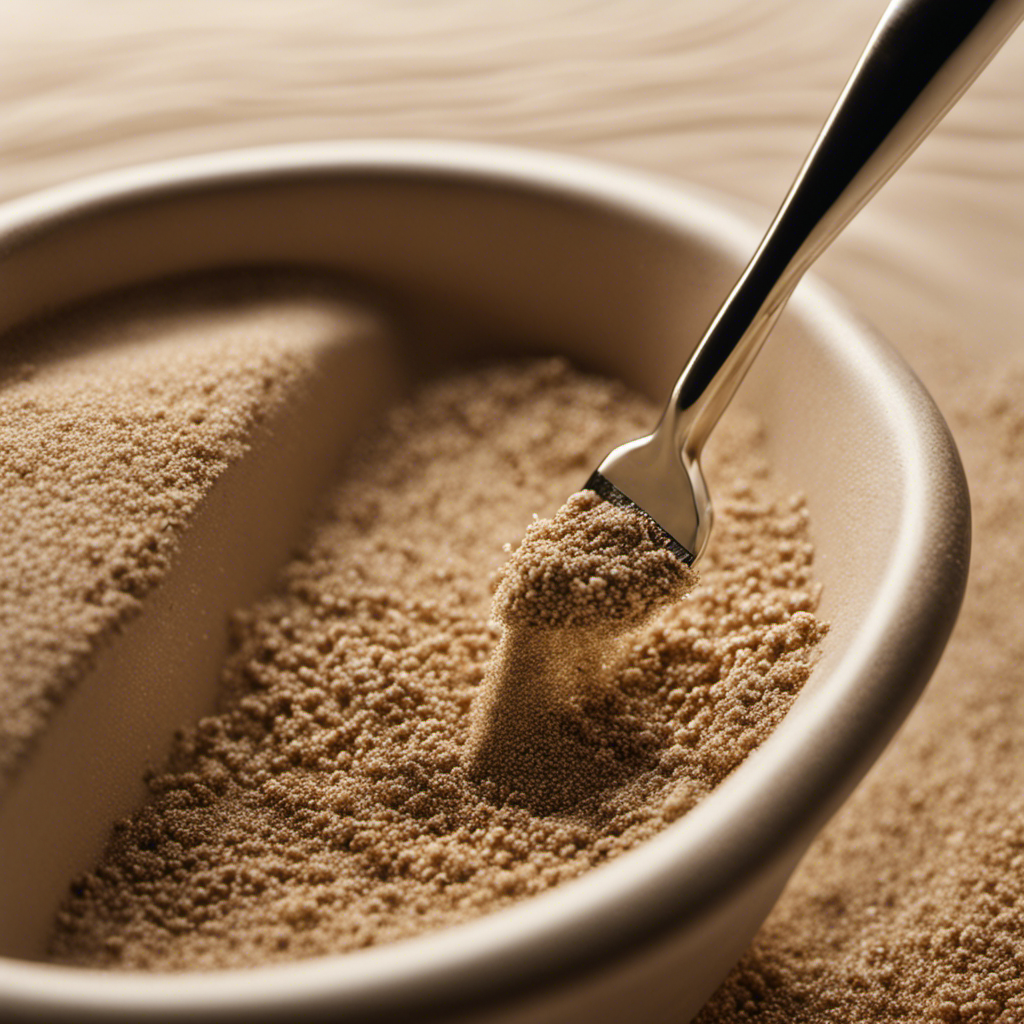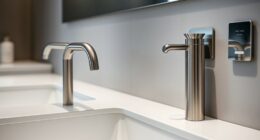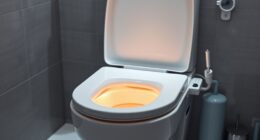Do you ever find yourself soaking in the warmth of your bathtub, wondering what kind of bathtub it is? Well, fear not, because we’re here to guide you through the labyrinth of bathtub types.
From the luxurious clawfoot bathtubs that exude elegance to the sleek freestanding tubs that make a modern statement, we’ll help you decode the world of bathtubs.
So sit back, relax, and get ready to dive into a world of tub knowledge.
Key Takeaways
- There are different types of bathtub materials, including acrylic, porcelain, cast iron, fiberglass, and stone. Each material has its own advantages and considerations.
- Clawfoot bathtubs can be identified by their ornate feet with intricate detailing and their classic oval shape with a sloping backrest. Regular cleaning and proper drying are recommended to prevent soap scum and water stains.
- Freestanding bathtubs offer a wide range of designs and can be placed anywhere in the room. They provide a deeper and more immersive soaking experience and are relatively easy to install compared to built-in tubs.
- Built-in bathtubs are installed directly into an alcove or against a wall, maximizing space utilization. They require proper waterproofing and can be challenging to clean and maintain. They offer a seamless, integrated look in bathroom design.
Different Types of Bathtub Materials
You should consider the different types of bathtub materials available to determine which one best suits your needs.
One popular option is acrylic bathtubs, which have both pros and cons. Acrylic bathtubs are lightweight, making them easier to install and move if needed. They also have a smooth and nonporous surface, which is resistant to stains and easy to clean. However, acrylic bathtubs are prone to scratching and can fade over time.
Another option to consider is porcelain bathtubs, which are known for their durability and classic look. Porcelain bathtubs are resistant to chipping and scratching, but they can be heavy and may require additional support during installation.
On the other hand, cast iron bathtubs are extremely durable and offer excellent heat retention. However, they are very heavy and can be difficult to install.
Identifying Clawfoot Bathtubs
To identify clawfoot bathtubs, take a look at the feet and the shape of the tub. Vintage clawfoot tubs are highly sought after for their unique charm and timeless appeal. One way to evaluate if a bathtub is vintage is by examining the feet. Vintage clawfoot tubs typically have ornate feet with intricate detailing, such as animal claws or decorative designs. Another characteristic to consider is the shape of the tub. Vintage clawfoot tubs often have a classic, oval shape with a sloping backrest. To help you better understand the distinguishing features of clawfoot bathtubs, here is a table outlining the key elements to look for:
| Key Features | Description |
|---|---|
| Feet | Ornate design with animal claws or decorative detailing |
| Shape | Classic oval shape with a sloping backrest |
Once you have identified a clawfoot bathtub, it is important to know how to clean and maintain it properly. Regular cleaning with a mild soap and soft cloth is recommended to prevent soap scum and mineral deposits. Avoid using abrasive cleaners or harsh chemicals that can damage the tub’s surface. Additionally, make sure to dry the tub thoroughly after each use to prevent water stains. With proper care, your clawfoot bathtub can be a beautiful and functional addition to your bathroom.
Now that you have a good understanding of clawfoot bathtubs, let’s move on to the next section about understanding freestanding bathtubs.
Understanding Freestanding Bathtubs
Understanding freestanding bathtubs can add a touch of elegance and luxury to any bathroom. These standalone fixtures offer several advantages over traditional built-in tubs. Here are four key points to consider when choosing the right freestanding bathtub:
-
Design options: Freestanding bathtubs come in a wide range of designs, from classic clawfoot styles to modern, minimalist shapes. Consider the overall aesthetic of your bathroom and choose a bathtub that complements it.
-
Versatility: Unlike built-in tubs, freestanding bathtubs can be placed anywhere in the room. This gives you the freedom to create a unique layout and maximize space utilization.
-
Easy installation: Freestanding bathtubs are relatively easy to install compared to built-in tubs. They don’t require any additional framing or plumbing modifications, making them a convenient choice for bathroom renovations.
-
Soaking experience: Freestanding bathtubs typically offer a deeper and more immersive soaking experience. Their standalone design allows for more water depth, providing a luxurious and relaxing bathing experience.
Decoding Built-in Bathtubs
When considering built-in bathtubs, it’s important to evaluate the available space in your bathroom. Built-in bathtubs are designed to be installed directly into an alcove or against a wall, maximizing the use of space.
One common problem with built-in bathtubs is the potential for leaks or water damage if not properly installed. It’s crucial to ensure that the surrounding walls and floor are properly waterproofed to prevent any issues.
Another common problem is that built-in bathtubs can be difficult to clean and maintain, especially if there are hard-to-reach areas or tight corners.
On the flip side, built-in bathtubs have their advantages. They are typically more affordable compared to freestanding tubs and offer a seamless, integrated look in your bathroom design. They also come in a variety of sizes and styles to suit your preferences.
Ultimately, the decision to choose a built-in bathtub depends on the available space in your bathroom, your budget, and your personal preferences.
Exploring Whirlpool and Jetted Bathtubs
Explore the benefits of whirlpool and jetted bathtubs for a luxurious and therapeutic bathing experience.
-
Pros and cons of whirlpool bathtubs:
- Pros: Whirlpool bathtubs provide a soothing massage effect through the use of strategically placed jets. They can help relieve muscle tension and improve circulation.
- Cons: Whirlpool bathtubs require regular maintenance to prevent bacterial growth and ensure optimal performance. They also tend to be more expensive than traditional soaking tubs.
-
Comparison between jetted bathtubs and traditional soaking tubs:
- Jetted bathtubs: These tubs have jets that release a powerful stream of water or air, creating a massaging sensation. They offer a more invigorating bathing experience.
- Traditional soaking tubs: These tubs are deeper and designed for a relaxing soak. They do not have jets, but are favored for their simplicity and elegance.
Whether you choose a whirlpool or jetted bathtub, both options provide a luxurious and therapeutic bathing experience. Consider your personal preferences and needs when making a decision.
Frequently Asked Questions
How Do I Measure the Dimensions of My Bathtub?
To measure the dimensions of your bathtub accurately, start by measuring the length, width, and depth using a tape measure. If you’re unsure, consider using alternative options like a string or paper to get precise measurements.
What Are the Benefits of a Walk-In Bathtub?
Walk-in bathtubs offer several benefits, especially in terms of accessibility. These tubs are designed to make bathing safer and more convenient, with features like low entry thresholds, built-in seats, and grab bars.
How Do I Properly Clean and Maintain My Bathtub?
To properly clean and maintain your bathtub, start by understanding the cleaning techniques that work best for your specific type of tub. Additionally, be aware of common bathtub problems that may require attention and address them promptly.
Can I Convert My Built-In Bathtub Into a Freestanding One?
Converting a built-in bathtub into a freestanding one can be a great way to transform your bathroom. However, it’s important to consider the pros and cons before making the switch.
Are There Any Special Considerations for Installing a Whirlpool or Jetted Bathtub?
When installing a whirlpool or jetted bathtub, there are special plumbing and electrical requirements to consider. Make sure you have the proper outlets and wiring in place to accommodate the additional features.
Conclusion
So now you know the different types of bathtubs and how to identify them. Whether it’s a clawfoot, freestanding, built-in, or whirlpool tub, each has its own unique features and benefits.
With this knowledge, you can confidently determine what kind of bathtub you have in your home. So why settle for a plain shower when you can luxuriate in a beautiful, relaxing bathtub?
Isn’t it time to indulge in a little self-care and transform your bathing experience?
